Research Article, J Biodivers Manage Forestry Vol: 11 Issue: 1
Negative Pressure Plasma Effect on Bassela alba Seeds and its after Effect Analysis in Worse Environment
Md. Mehedi Hassan1*, K. M. Jalal Uddin Rumi2, M.R. Hasan3, Shanjib Karmaker2 and Md. Aminul Islam4
1Plasma Physics Division, Bangladesh Atomic Energy Commission, Bangladesh
2Nuclear Power and Energy Division, Bangladesh Atomic Energy Commission, Bangladesh
3Material Science Division, Bangladesh Atomic Energy Commission, Bangladesh
4Material and Metallurgical Division, Bangladesh University of Engineering and Technology, Bangladesh
*Corresponding Author: Hassan MM
Plasma Physics Division, Bangladesh Atomic Energy Commission, Bangladesh
Tel:+880-172-990-5507
E-mail:mehedihasan083@gmail.com
Received: 04 January, 2022, Manuscript No. JBMF-21-50018;;
Editor assigned: 10 Jan, 2022, PreQC No. JBMF-21-50018 (PQ);
Reviewed: 17 January, 2022, QC No JBMF-21-50018;
Revised: 21 January 2022, Manuscript No. JBMF-21-50018 (R);
Published: 28 January, 2022, DOI: 10.4172/ jbmf 2327-4417.50018
Citation: Hassan MM, Rumi KMJU, Hasan MR, Karmaker S, Islam MA ( 2022) Negative Pressure Plasma Effect on Bassela alba Seeds and it's after Effect Analysis in Worse Environment. J Biodivers Manage Forestry 11:1.
Abstract
Negative pressure plasma is an important tool for enhancement of seed germination, its growing time length, plant growth rate and seedling sustainability rate. Due to rapid growth of population and industrialization cultivating land in world is decreasing day by day. Hence various alternative methods for plant cultivation have been developed without any genetic risk. In this circumstance present research focus low pressure plasma technology for increasing crop yields (Bassela alba). Air assisted low pressure plasma has been applied in familiar vegetable Bassela alba seeds before plantation in a worse environment. Worse environment mentions in this research means no soil preparation, no shorting of seeds, no watering before plantation and planting in a congested area. Observation shows that the germination rate of treated seeds increased compare to the controlled seeds. The treated seedling grow rapidly compare to the controlled seedlings. Also the number of leaf per plant, plant height, and sustainability rate of treated Bassela alba seeds has increased compare to the controlled seeds.
Keywords: Pressure
Keywords
Bassela alba; Control seeds; Treated seeds; Growth rate; Radio frequency
Introduction
Familiar vegetable known as poi in our country belongs to the family Basellaceae. It is a popular summer leafy vegetable widely cultivated in Bangladesh, India, in tropical Asia and Africa. This vegetable is also called Indian spinach (Bassela alba) is a fleshy annual or biennial plant and twining much branched herb with alternate leaves.
Bassela alba has thick tender stems and the leaves are almost circular to ovate, alternate, and short petioles. They are thick, Rugose, succulent, and colored from green to purple [1,2]. The cultivation of Basella alba requires proper soil properties including plant nutrient. Soil nutrient provided by applying inorganic fertilizer or organic manure or both. Only organic manure application can replace the requirement of inorganic fertilizer. Organic manure improves soil structure as well as increases its water holding capacity. Moreover, it facilitates aeration in soil. Traditionally the fertilization [3] and irrigation [4] are the useful tools for improving crops yields. However, these processes are subject to economic [5] and environmental [6] conditions and their effects are not always sustainable [7].
But in recent year impressing technology plasma has drawn the attention in agricultural fields. Plasma assisted seeds improve the seeds germination rate; seedlings growth rate and the sustainability of seeding are also increased. It could activate the vitality of seed without gene mutation, so there is no genetic risk Moreover this is a pollution free technology. In addition soil condition and environmental condition are secondary issue in this plasma assisted plant cultivation process. Wu [8] has reported the effect of plasma ion implantation on pea seed. Also tomato yield was increased after treated with electromagnetic field plasma.
Materials and Methods
Plasma system development procedure
There exists various ways to develop a plasma system. Glow discharge, capacitive coupled plasma, arc discharge, dielectric barrier discharge, corona discharge, inductively coupled plasma, microwave discharge plasma etc. Each of these systems has its unique feature and applications. In this research dielectric barrier low pressure or negative pressure plasma is generated in a vacuum chamber by radio frequency signal. A cylindrical metal tube is use as a vacuum chamber. The whole circuit consists of a rotary suction pump, a cylindrical metal tube as anode, a helical metal structure as cathode, 13.6 MHz radio frequency signal generator , a matching box, a pirani gauge meter, power supply, and transformer. The feed gas is just the air. Rotary sucking pump is used to suck the air from the cylinder chamber to lower the pressure. First steps is the integrate all moveable parts with cylinder tube, ensuring enough air tightness. The process initiate with the sucking of air in cylinder chamber through rotary pump, lower the cylinder chamber pressure towards the negative pressure. The pressure is measured by pirani gauge meter. Before sucking Bassela alba seeds in a small pot were placed inside the cylinder chamber for plasma irradiation. Sucking by rotary pump reduce the cylinder chamber pressure continuously and finally reach negative pressure. At some negative pressure 4.1 (arbitrary choice) airs is allowed to enter the cylindrical chamber through a nob. These airs increased the cylinder chambers pressure but not allow enough to reach atmospheric pressure. The radio frequency signal generator generate radio frequency which ionize the entered air and low pressure plasma production occurs consequently. The negative pressure plasma system design diagram is shown in Figure 1 and experimental setup is shown in Figure 2.
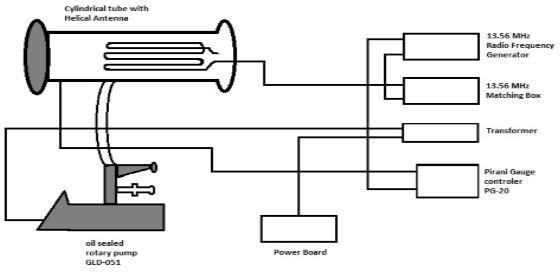
Figure 1: Design of negative pressure plasma system.
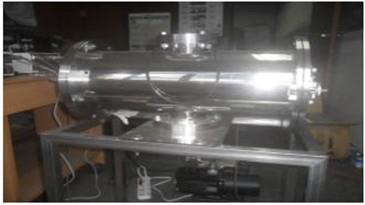
Figure 2: Vacuum pressure plasma system.
Plasma treatment and plantation
The seed which are under plasma treatment termed as treated seeds and normal seeds are termed as control seeds. We choose total 100 number of Bassela alba seeds which are not pre-treated and watered before plantation. Half of these seeds are sent to cylindrical chamber for plasma treatment about 30 minutes. Rest 50 seeds are controlled seeds. After plasma irradiation we planted both kinds of treated and controlled seeds in two same size flowerpots. The flowerpots are medium size so seeds density is huge compare in case of land plantation. The choice of flowerpots intends the unavailability of enough cultivation land in our city life. These two flowerpots are then marked for distinguish between treated and controlled planted seeds. The soil of these flowerpots is simply random soil i.e. does not possess the required well manure sandy loam soil. Conclude that the experiment was conducted in a very congested area and worst environment to explore the plasma irradiation seeds and seedlings development trends.
Plasma effect on seeds and seedlings
Observation of plasma treated Bassela alba seeds compare to controlled seeds shows some excellent results. Observation was taken at one week and at four weeks after plantation. Several parameters like germination rate, plant height, number of leaf per plant, growth rate, sustainability rate etc. are analyzed. In every case it is found plasma treated seeds has some better progression compare to controlled seeds in such worse and bad environment. The comparison shows that number of germinated seeds is more for treated seeds than controlled seeds. Out of 50, 30 treated seeds are germinated, where only 18 controlled seeds. The germination rate for treated seeds is about 60% where’s it is only 36%. Reactive species, formed during plasma discharge, breaking the seed dormancy. So plasma irradiated seeds germination rate increases. Although this germination rate for treated and control seeds are low compare to well-prepared land. The reason behind this is, no pre watering and sorting before plasma irradiation, worse soil condition and irregular plantation process. Shorting is an important process in our country as seed provider company does not shorting as well (Figures 3 and 4). Table 1 shows germination rate comparison.
Table1: Number of germinated Bassela alba seeds and germination rate comparison.
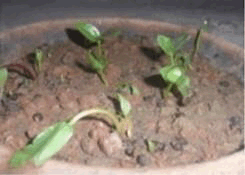
Figure 3: Control seeds after one week.
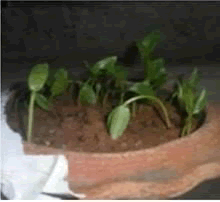
Figure 4: Treated seeds after one week.
Plasma irradiate seedlings however shows strong sustainable capability after germination in tough condition. In such congested area and worse condition treated seedlings were found 20 numbers after one week, where control seedlings were 11 numbers. Plasma radiation enhances the growth hormone functionality which helps the plant to sustain in tough condition (Figures 5 and 6).
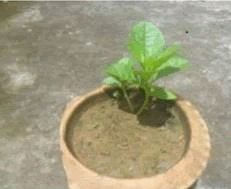
Figure 5: Control seedlings after four week.
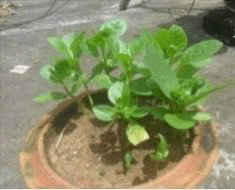
Figure 6: Treated seedlings after four week.
Results and Discussion
After four week the number of treated seedlings counted was 11 and controlled seedlings was only 2. This happens, due to the much higher seedling density, there exists competition for sunlight and also nutrient from the soil among the seedling, results some seedlings death. Also mealy bugs and Aphids insects are spread easily due to this large seedlings density. Observation shows all these adverse effects are reduced by plasma treatment. Sustainability rate comparison can comprehensive.
Number of leaf per plant is the measure of growth rate and vigorousness of a plant. Observation shows the average number of plant is more in plasma irradiated Bassela alba seedlings than control seedlings. After one week from showing the number of leaf for both treated and control plants are same, in 2 numbers. After then the difference come out. Second observation in four week we found the average number of leaf for controlled seedlings are 3.5 where number of leaf 5, for treated seedlings. This clearly shows plasma irradiation effect. As Bassela alba leaf is main part of vegetable, we can optimistic about the plasma treatment.
Table 2:Bassela alba seedling quantity, sustainability rate, number of leaf per seedlings comparison.
Height comparison also shows better improvement for treated seedlings. Measuring height at one week, the average height of controlled seedlings were 4.6 cm approximately and 6.5 cm for treated seedling. Second measurement at four week also reflects this manner. The controlled seedlings average height were 8.25 cm and treated seedlings height were surprisingly 13.5 cm. Both observations indicate plasma can stimulate plant growth hormone, thereby increase by height.
From this height the average growth rate was calculated within one week to four week (7 days to 28 days). The average growth rate was 0.18 cm per days for controlled seedlings. On the other hand the average growth rate per days was .33 cm almost double than controlled seedlings.
The formula used here for evaluating growth rate per days (GRP) is

H1= Initial height of plant
H2= Final height of plant
T=Time (days) between two measurement.
Although plant growth rate is fluid concern. So more accurate plant growth rate can be calculated very sophistically in laboratory.
Table 3:Bassela alba seedlings height, growth rate comparison.
Conclusion
Rapid industrialization and population growth rate, the world is facing lack of cultivation land and food deficiency. To meet the food demand over cultivation with excess chemical fertilizer land cause loss its fertility. The genetic strategies are familiar but sometimes concerns in safety issue. In this regards plasma technology becomes a promising option for crop yields enhancement. Plasma irradiation in this research manifests the improvement of Bassela alba seeds germination rate, plant growth rate, number of leafs, plants height in a congested area. Also Farmers and consumer both will be benefited through this technology.
Acknowledgement
The author wants to express gratitude to Bangladesh atomic energy commission for providing such a well-furnished lab and permit to entrance there.
References
- Martin FW, Ruberte RM, Meitzner LS (1998) Edible leaves of the tropics. 3rd ed. North Fort Myers, Florida. [Google scholar]
- Edible leaves of the tropics. 3rd ed. North Fort Myers, Florida
- Raun WR, Johnson GV (1999) Improving nitrogen use efficiency for cereal production. Agron J 91: 357-363. [Crossref], [Google scholar]
- Bouman BAM, Tuong TP (2001) Field water management to save water and increase its productivity in irrigated lowland rice. Agr Water Manage 49: 11-30. [Crossref], [Google scholar]
- Morison JIL, Baker NR, Mullineaux PM, Davis WJ (2008) Improving water use in crop production. Phil Trans Roy Soc B Biol Sci 363: 639-658. [Crossref], [Google scholar]
- Bodelier PLE, Laanbroek HJ (2004) Nitrogen as a regulatory factor of methane oxidation in soils and sediments. FEMS Microbiol Ecol 47: 265-277. [Crossref], [Google scholar]
- Zhen L, Routray JK (2003) Operational indicators for measuring agricultural sustainability in developing countries. Environ Manage 32: 34-46. [Crossref], [Google Scholar]
- Wu MP, He GX, Zhong H (1997) Effect of cold plasma treatment on seed germination and growth of wheat. JSJU 15: 182. [Crossref], [Google scholar]
 Spanish
Spanish  Chinese
Chinese  Russian
Russian  German
German  French
French  Japanese
Japanese  Portuguese
Portuguese  Hindi
Hindi 
